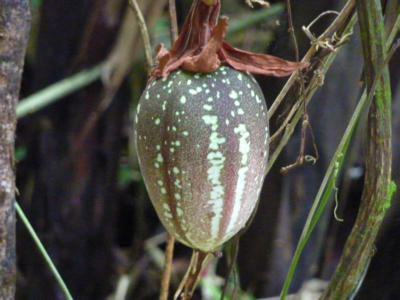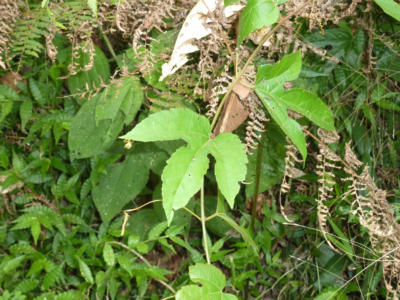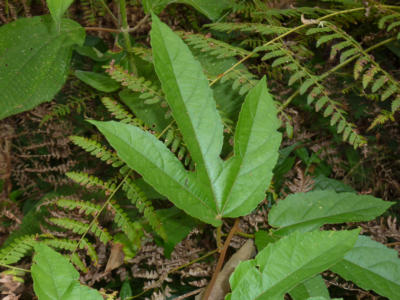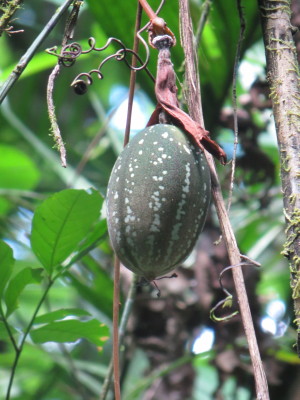Passiflora vitifolia
P. vitifolia is a common forest species of Passiflora, often growing in the canopy. However, the bright scarlet flowers bloom in the forest understory and new growth shoots are often to be found at ground level near the flowers, in treefall clearings or forest edge. Interestingly, this species is also common across the artificially maintained successional plots (cut every five years on a rotating schedule), where other forest species P. ambigua, P. pittieri and P. lobata do not thrive. Range: from Nicaragua to Bolivia, Venezuela and Western Brazil; in wet primary or secondary forest and forest edges 0-1500 meters elevation.
Like P. oerstedii and P. lobata, P. vitifolia leaves do not produce cyanide when crushed. However, the stems are mildly cyanogenic, producing 0.1 to 0.5 μM HCN/g plant tissue, and the green fruits should be considered toxic (up to 2.2 μM/g in the rind). P. vitifolia rootlets are also mildly cyanogenic, releasing .025-.1 μM/g HCN. Smiley and Wisdom (1985) found full-sized leaves this species to contain 7-15% dry weight of tannins, chemicals which may interfere with the enzymatic release of HCN.
P. vitifolia is the most commonly used host plant for both Heliconius cydno and H. hecale at La Selva, both species laying their eggs on the tips of the new, uncoiled tendrils. H. melpomene is also quite capable of feeding and growing on P. vitifolia, even though it is not found on that species in nature. The large ear-like petiolar nectaries are very attractive to ants such as Ectatomma, and plants which are regularly tended by these ants seem to be quite well-protected against Heliconius caterpillars (Smiley 1986).
P. vitifolia is also fed upon by flea beetles, including the Passiflora-generalist Blue Flea Beetle (Monomacra violacea), the Black-tibia Flea Beetle (Parchicola "black tibia") the and the Yellow Ptocadica Flea Beetle (Ptocadica "yellow"). The Yellow-tibia Flea Beetle (Parchicola "yellow-tibia") and the Yellow-legged flea beetle (Parchicola DF2) have also been found on this species.

P. vitifolia fruits are distinctive-looking.


The thin grape-like leaves give the plant its name.
